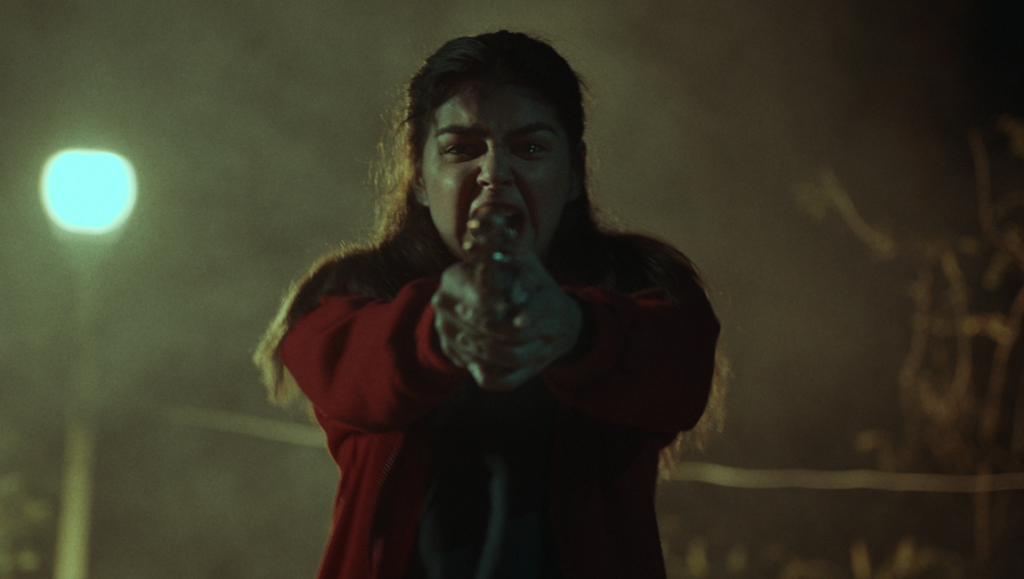Godard’s famous axiom (by way of D.W. Griffith) about a girl and a gun being the essential elements of a movie is given a very literal demonstration in Rae Red’s grim and despairing solo directorial debut The Girl and the Gun. The narrative is neatly bisected into two distinct halves, and the transition is fittingly situated at almost the exact midpoint. The first half follows a young woman, the unnamed girl of the title (Janine Gutierrez), a downtrodden, constantly put-upon sad-sack anxiously navigating the mean streets of Quezon City, Philippines. The meager wages she earns as a department store saleswoman barely cover her rent and the funds she sends to her family in the provinces. She’s mostly isolated at her job, since she can ill afford to go out drinking with her coworkers after work. Her boss often insults her appearance, threatening to fire her for wearing torn stockings. She must endure sexual harassment from male customers, as well as catcalling from guys on the street on her way home from work. Her roommate has a violently abusive boyfriend who threatens the Girl to prevent her from intervening or telling anyone else about his abuse. When this succession of indignities culminates in her suffering a sexual assault, she gets her hands on a gun found in the street, setting out to right the many wrongs perpetrated against her. The film then rewinds itself and follows the gun, from its manufacture and assembly, to its use in Marcos-era extra-judicial killings, to its significance to a little boy in the 1980s who grows up to be a police officer in the present day, a foot soldier in Rodrigo Duterte’s brutal and singularly inhumane war on drugs.
Red’s film has a runtime of a mere 80 minutes, yet she ambitiously tackles a great many subjects as she laments the social and political ills of her home country: the patriarchal nature of a society that openly oppresses women; the chasm of class divisions plaguing the Philippines; the indiscriminate and unjust rounding up of suspects in Duterte’s drug war. These admirable aims are marred by Red’s muddled messaging. The conclusion appears to take an anti-gun stance, and the film often laments the violence permeating the street life Red so vividly captures. Yet the gun is the means by which the Girl is able to regain some measure of control over the oppression which has so constricted her. As such, we are left with an unsettled line blurring between glorifying and decrying the power that the gun gifts to the person holding it in her hands.
Published as part of NYAFF 2020 — Dispatch 4.


Comments are closed.